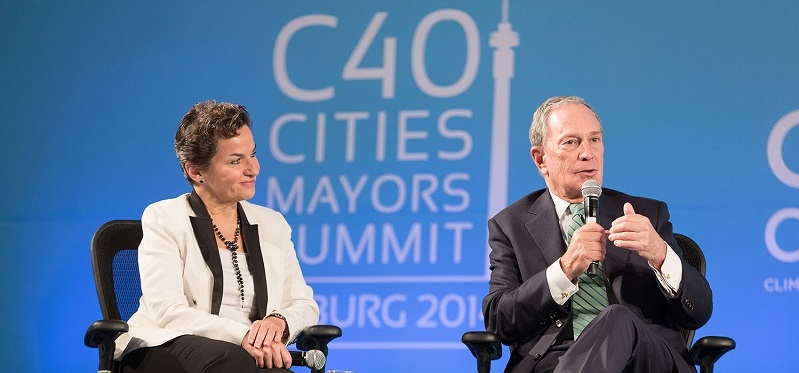It is a common misconception that achieving the world’s shared goal of reducing greenhouse gas emissions requires an enormous, coordinated global effort. However, the effects of a variety of climate actions taken on a smaller scale can be combined to produce powerful results, and can often be implemented more quickly and at a lower cost. More localized climate policies can be tailored to meet the specific economic, environmental, and social conditions of a jurisdiction. This helps narrow the scope for emissions reduction activities, making it easier to pursue only the opportunities that have the greatest emissions reduction potential. While feelings about a global climate strategy remain mixed, there has been growing optimism and enthusiasm for city- and state- level action to solve climate change.
At the United Nations Climate Summit, cities led the way in terms of commitments to emissions reduction. On September 23, UN Secretary-General Ban Ki-moon and former mayor Michael Bloomberg launched the global Compact of Mayors, in which cities will commit to greenhouse gas reductions, publicize their targets, and report their progress. The Compact of Mayors includes hundreds of cities from around the world that have committed to targets and strategies to reduce their emissions.
While many nations have committed to climate actions, new research argues that the cities within them are capable of achieving much more. A study by the C40 Cities Climate Leadership Group – a partner of the Compact – found that energy-saving efforts in cities’ buildings, transportation systems, and waste streams can reduce global emissions by an additional 3.7 gigatons in 2030, and by 8 gigatons in 2050. This reduction would be equivalent to cutting global coal use in half.

“Working Together: Global Aggregation of City Climate Commitments.” C40 Cities Climate Leadership Group.
And in the United States, given the political difficulty in passing any national legislation, let alone climate legislation, cities have a leadership opportunity to influence emissions reductions. New York City mayor Bill De Blasio has committed to reducing the city’s greenhouse gas emissions 80 percent by 2050, mainly through efficiency improvements in buildings, which are responsible for three-fourths of the city’s total emissions. By implementing robust recycling and composting programs, San Francisco has been able to divert 80 percent of its waste stream from landfills, which are responsible for nearly one-fifth of U.S. methane emissions. In 2013, the City of Austin earned the EPA’s first-ever Climate Leadership Award, recognizing the city for its aggressive climate actions, as outlined in its Climate Protection Plan. Dozens of other U.S. cities have made similar efforts to reduce their emissions. Current and future city efforts, when combined, have the potential to make an enormous difference in reducing emissions.
Cities are home to more than half of the world’s population, and are responsible for 70 percent of global greenhouse gas emissions. Hubs for entrepreneurship and education, cities have incredible access to resources and knowledge, which makes them all the more effective in taking action to mitigate climate change. In the absence of broader commitments to reduce greenhouse gas emissions, efforts at the city level are likely to be very meaningful in the coming years.

